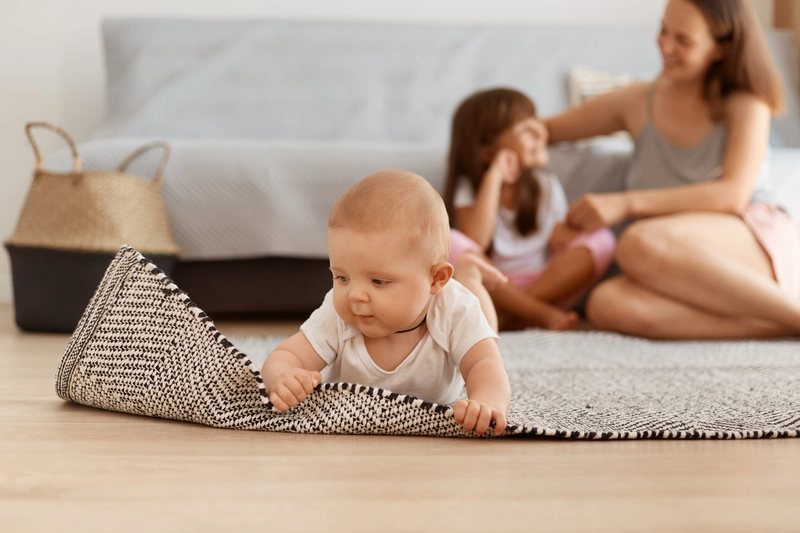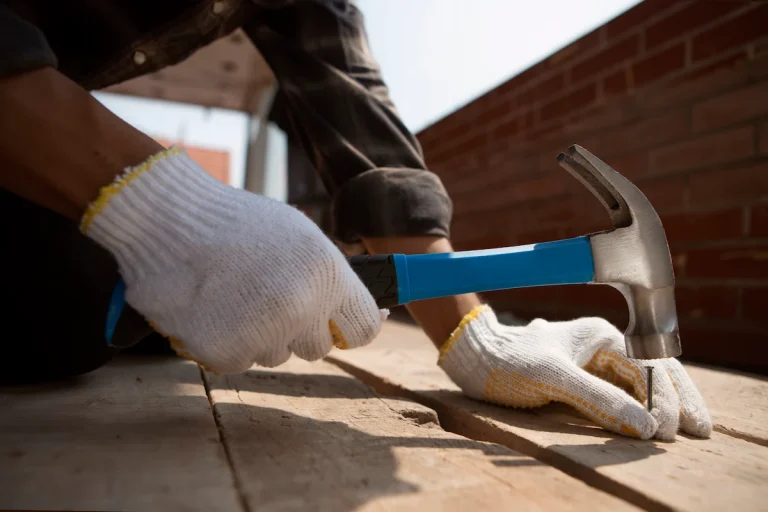Wood flooring is an excellent choice for your home. But before installing it, do you need underlay for wood flooring?
We will explore the importance of underlay for both solid wood and engineered wood flooring, discuss the different types of underlay available, the benefits they provide such as sound insulation, moisture protection, and thermal insulation, and how to choose the right underlay for your specific flooring needs.
Stay tuned to make an informed decision for your next wood flooring project!
What Is Underlay for Wood Flooring?
Underlay for wood flooring is a layer installed beneath hardwood or engineered wood to support and protect the flooring. It offers several benefits—absorbing sound, acting as a moisture barrier, and levelling minor subfloor imperfections. This added layer improves comfort, prolongs the life of the floor, and enhances performance, especially in moisture-prone areas.
The Types of Underlay for Wood Flooring
There are various underlay options designed to complement different flooring needs.
1. Foam Underlay
Foam underlay is widely used for its cushioning and noise-reduction abilities. It’s flexible, easy to install, and suitable for engineered wood, laminate, and hardwood floors. The added comfort underfoot and sound insulation make it a favourite for many homes.
2. Rubber Underlay
Rubber underlay stands out for its durability and moisture resistance. Ideal for kitchens, bathrooms, and basements, it prevents water damage and adds long-term protection. It also absorbs impact, helping to extend the life of wood flooring.
3. Cork Underlay
Eco-conscious and moisture-resistant, cork underlay also offers excellent thermal insulation. Made from sustainable cork oak bark, it suits humid areas and helps maintain a comfortable indoor temperature.
4. Felt Underlay
Felt underlay enhances the plush feel underfoot. Its soft texture insulates the floor and improves walking comfort, especially useful in living spaces or bedrooms with hardwood or engineered wood flooring.
5. Combination Underlay
This underlay blends multiple benefits—sound insulation, moisture protection, and cushioning. It’s ideal for enhancing the performance and longevity of wood floors in multi-functional environments.
Is Underlay Necessary for Wood Flooring?
Do you need underlay for wood flooring? Yes, underlay is vital for improving comfort, protecting against moisture, and reducing sound. For both hardwood and engineered wood, underlay ensures long-term durability and a quieter, more comfortable space.
The Benefits of Using Underlay for Wood Flooring
Why do you need underlay for hardwood floors? It improves comfort, protects against moisture, and insulates against sound and heat.
a. Sound Insulation
Underlay reduces noise by absorbing impact sounds and minimising footstep noise between floors. Materials like rubber and cork offer excellent acoustic performance.
b. Moisture Protection
Acting as a barrier, underlay prevents moisture from reaching the wood, protecting against warping or mould. It also helps create a stable base, reducing squeaks and movement.
c. Thermal Insulation
Underlay helps maintain indoor temperatures by reducing heat loss. This enhances energy efficiency and keeps rooms more comfortable year-round.
d. Cushioning and Comfort
Underlay adds softness underfoot, reducing fatigue and strain. It makes wood flooring more comfortable to walk on, especially in high-traffic areas.
Do You Need Underlayment for Solid Hardwood Floors?
Do you need underlay for wood flooring if it’s solid hardwood? It depends. Moisture protection is the main benefit. Underlay prevents water damage and improves subfloor levelling. However, for sound insulation, underlay is less critical since solid wood has natural acoustic qualities.
Yes, for Moisture Protection
It guards against cupping, warping, and mould caused by moisture. A moisture barrier is essential to preserve the floor’s integrity and longevity.
No, for Sound Insulation
Solid wood is dense and naturally reduces sound, often eliminating the need for extra acoustic underlay.
Do You Need Underlay for Engineered Wood Flooring?
Yes, underlay is recommended for engineered wood flooring. It offers protection from moisture and improves sound insulation.
Yes, for Moisture Protection
Underlay acts as a barrier against subfloor moisture, protecting the layered construction of engineered wood and preventing warping or swelling.
Yes, for Sound Insulation
A good underlay reduces impact and airborne noise. This enhances the acoustic comfort and atmosphere in your space.
How to Choose the Right Underlay for Your Wood Flooring
Choosing the right underlay depends on factors like moisture protection, soundproofing, durability, and compatibility with your specific flooring type. Engineered wood, solid hardwood, and laminate may all require different thicknesses or materials. Look for an underlay that meets your needs for comfort, longevity, and protection.
Installing engineered wood floors offers the benefit of increased stability compared to solid wood floors, making them less susceptible to changes in humidity and temperature. This structural advantage makes engineered wooden floors an ideal choice for areas with varying climates, such as basements or kitchens
It would be highly beneficial for you to choose high-quality engineered wood floors like those from Lionvaest’s collection offered at TEKA Flooring. Lionvest provides a range of engineered wood types that you can customise to complement your home’s design, spanning from brown tones and grey tones to natural-tone engineered wood flooring.
Read also:
































